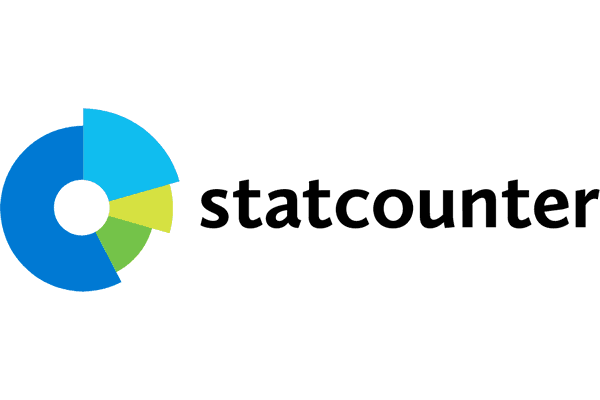Pengembangan Alat Ukur Hidrometri Berbasis 5 Jenis Sensor Untuk Deteksi Konsentrasi Sedimen Dalam Upaya Mitigasi Bencana Banjir Sungai Bomo
Abstract
Keywords
Full Text:
PDFReferences
R. D. Noviandani, Z. Erwanto, and Q. Shofiyah, “Evaluasi Kapasitas Pada Sungai Tambong Tengah Terhadap Potensi Luapan Aliran,” in Seminar Nasional Terapan Riset Inovatif (SENTRINOV) Ke-6, 2020, vol. 6, no. 1, pp. 626–633.
C. Asdak, Hidrologi dan Pengelolaan Daearah Aliran Sungai. Yogyakarta: Gajah Mada University Press, 2014.
Z. Erwanto, D. D. Pranowo, D. Widakdo, and N. Wilujeng, “The Influence of Sediment Loads on the Irrigation Discharge in The Upstream and Downstream of the Major River in Banyuwangi Regency,” IOP Conf. Ser. Earth Environ. Sci., vol. 207, no. 012066, pp. 1–14, 2018.
Z. Erwanto and N. Anwar, “Modelling the Sediment Load in the Bird Feather-Type Watersheds along the Main Rivers of Banyuwangi Regency,” IOP Conf. Ser. Earth Environ. Sci., vol. 1097, no. 1, p. 012050, 2022.
К. Б. Гусейнов, “Ultrasonic Level Gauge,” RU2419074C1, 2006.
M. Wada, “Ultrasonic flow rate measurement method and ultrasonic flow rate measurement device,” JP2011122831A, 2011.
В. В. Сафонов, “Device to measure liquid flow in open canals,” RU2485449C1, 2006.
M. Wada, “Ultrasonic flow rate measurement method and flow rate measurement apparatus,” JP2010190775A, 2010.
M. Mousa, X. Zhang, and C. Claudel, “Flash Flood Detection in Urban Cities Using Ultrasonic and Infrared Sensors,” IEEE Sens. J., vol. 1, 2016.
G. Leeks, “Measuring Sediment Loads, Yields, and Source Tracing,” Encyclopedia of Hydrological Sciences. John Wiley & Sons, Ltd., pp. 1–10, 2005.
Soewarno, Hidrologi Pengukuran dan Pengolahan (Hidrometri). Bandung: Nova, 1991.
K. M. Arsyad, Modul Perhitungan Hidrologi Pelatihan Perencanaan Bendungan Tingkat Dasar. Bandung: Pusat Pendidikan Dan Pelatihan Sumber Daya Air Dan Konstruksi, 2017.
M. Heidarnejad M.S, S. H. Golmaee, A. Mosaedi, and M. Z. Ahmadi, “Estimation of Sediment Volume in Karaj Dam Reservoir (Iran) by Hydrometry Method and a Comparison with Hydrography Method,” Lake Reserv. Manag., vol. 22, no. 3, pp. 233–239, 2009.
R. J. Manuhana and S. Dibyosaputro, “Kajian Muatan Sedimen Tersuspensi Di Sungai Code Daerah Istimewa Yogyakarta,” J. Bumi Indones., vol. 6, no. 4, 2017.
D. A. Wulandari, Suripin, and Syafrudin, “Evaluasi Penggunaan Lengkung Laju Debit-Sedimen (Sediment-Discharge Rating Curve) Untuk Memprediksi Sedimen Layang,” 2004.
H. B. Ghadim, M. Salarijazi, and I. Ahmadianfar, “Developing a Sediment Rating Curve Model Using the Curve Slope,” Pol. J. Environ. Stud., vol. 29, no. 2, pp. 1151–1159, 2020.
K. Khanchoul and M. B. Jansson, “Sediment Rating Curves Developed On Stage And Seasonal Means In Discharge Classes For The Mellah Wadi, Algeria,” Geogr. Ann, vol. 90 A, no. 3, pp. 227–236, 2008.
D. E. Walling, “Limitations of the Rating Curve Technique for Estimating Suspended Sediment Loads, With Particular Reference to British Rivers,” Eros. solid matter Transp. Inl. waters, vol. 122, pp. 34–78, 1977.
S. Azadi, H. Nozari, and E. Godarzi, “Predicting Sediment Load Using Stochastic Model and Rating Curves in a Hydrological Station,” J. Hydrol. Eng., vol. 25, no. 8, pp. 1–11, 2020.
Z. A. Boukhrissa, K. Khanchoul, Y. Le Bissonnais, and M. Tourki, “Prediction of sediment load by sediment rating curve and neural network (ANN) in El Kebir catchment, Algeria,” J. Earth Syst, vol. 122, no. 5, pp. 1303–1312, 2013.
S. S. Tfwala and Y.-M. Wang, “Estimating Sediment Discharge Using Sediment Rating Curves and Artificial Neural Networks in the Shiwen River, Taiwan,” Water, vol. 8, no. 53, pp. 1–15, 2016.
D. Hapsari, T. Onishi, F. Imaizumi, K. Noda, and M. Senge, “The Use of Sediment Rating Curve under its Limitations to Estimate the Suspended Load,” Rev. Agric. Sci., vol. 7, pp. 88–101, 2019.
N. Efthimiou, “The role of sediment rating curve development methodology on river load modeling,” Environ. Monit. Assess., vol. 191, p. 108, 2019.
M. B. Jansson, “Comparison of Sediment Rating Curves Developed on Load and on Concentration,” Nord. Hydrol., vol. 28, no. 3, pp. 189–200, 1997.
S. T. Harrington and J. R. Harrington, “An assessment of the suspended sediment rating curve approach for load estimation on the Rivers Bandon and Owenabue, Ireland,” Geomorphology, vol. 185, pp. 27–38, 2013.
B. Hu, H. Wang, Z. Yang, and X. Sun, “Temporal and spatial variations of sediment rating curves in the Changjiang (Yangtze River) basin and their implications,” Quat. Int., vol. 230, pp. 34–43, 2011.
Z. Erwanto, N. Anwar, and B. Sarwono, “A Study Of Sediment Delivery Ratio Using AVSWAT-X In The Catchment Area Of Pacal Reservoir Of Bojonegoro,” ITS J. Civ. Eng., vol. 30, no. 2, pp. 90–101, 2010.
A. T. Dewi, Z. Erwanto, and Y. Ulfiyati, “Studi Korelasi Debit Sungai Dan Suspended Load Pada Upstream Bendung Di Hulu Sungai-Sungai Besar Kabupaten Banyuwangi,” Log. J. Ranc. Bangun dan Teknol., vol. 18, no. 1, pp. 1–7, 2018.
E. W. Setyaningrum, Z. Erwanto, S. H. Yuniari, K. P. Prapti, and A. T. K. Dewi, Manajemen Konservasi Lahan dan Sumberdaya Pesisir. Purbalingga: Eureka Media Aksara, 2022.
DOI: https://doi.org/10.32487/jtt.v12i1.1914
Refbacks
- There are currently no refbacks.
JTT (Jurnal Teknologi Terpadu) has been indexed by:
|
|
|
|
|
|
|
|
|













